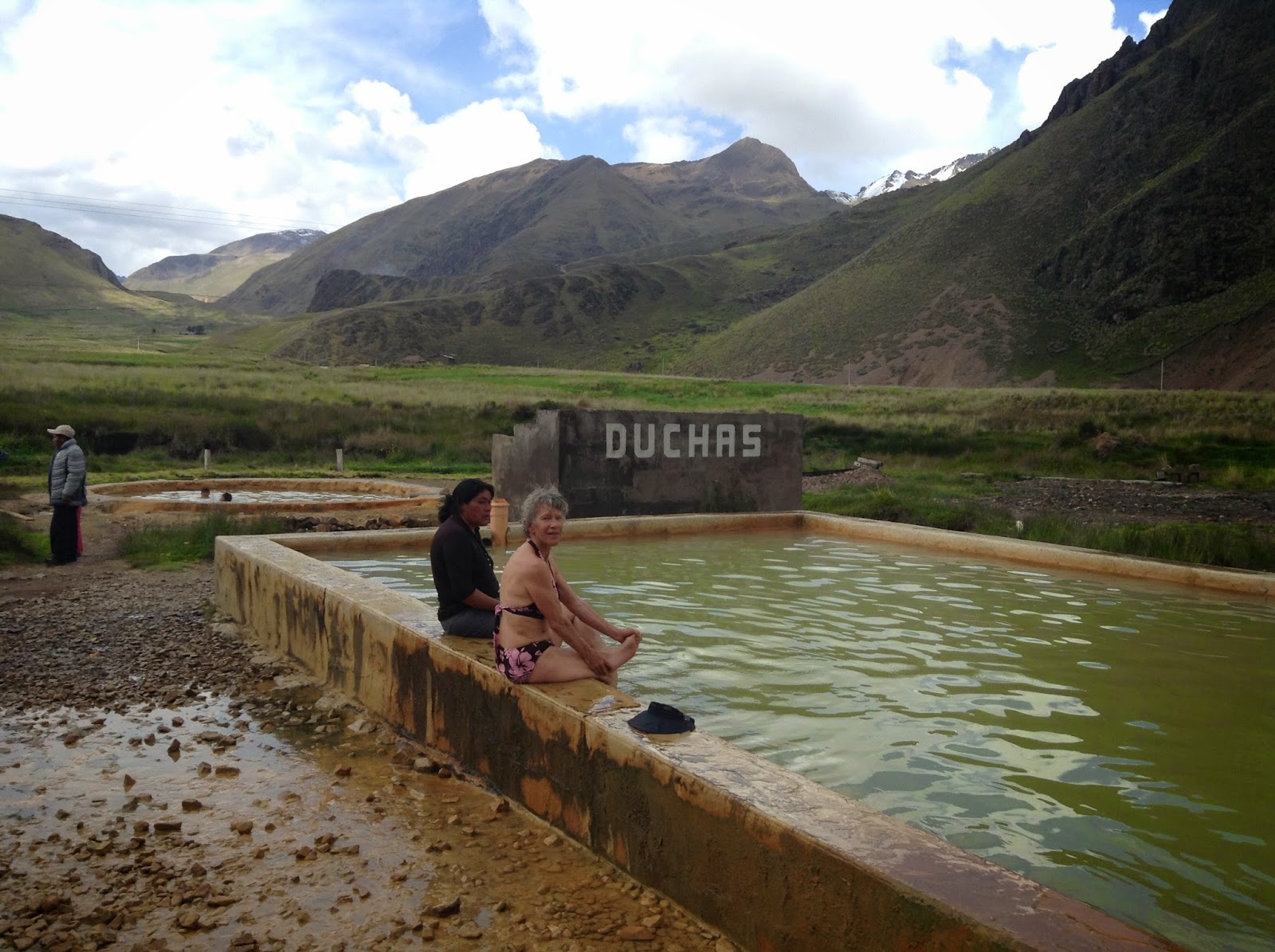Carnaval on Taquile is a week-long Celebration
 |
| Silvano cheers us on |
It's Marti Gras, but doesn't end on Tuesday night, as in New Orleans. Rather, Ash Wednesday is the BIGGEST party day. This year nine leaders who hold various community offices lead each of nine groups in a progressive dancing party from house to house. This was our fourth Taquile Carnaval over the 29 years that we have been visiting Taquile Island.
We started on Monday. Our co-father and co-mother, Gonzalo and Pelajia, are padrinos to one of the leaders, Moises. The Yucras are a large family, so Moises was invited by LOTS of households to party at their houses, so we progressed through eleven houses on Monday. Too many. Later in the week we danced with Ruperta's father, Florentino, and his group only went to 5 houses. This gave us more time to dance at each house, and to drink our beer more slowly.
This is how it goes:
The first house of the morning usually has soup; after Monday's beginning, this was also the "overnight" house, the last night of the previous evening, set up with rooms for people to sleep if they want. We don't always make it for soup, since we have come home to sleep and have our own breakfast. A desultory beginning includes bursts of drums and flutes as the host group waits for more participants to arrive; waits for the morning rain to stop.
After food, then WATERMELON. Prayer over the watermelon and three watermelon are cut: one by the men, one the women and one the band. Nice and juicy. Then more BEER, then the band starts and women start dancing. Three coca
estallias are opened and blessed and hands full of leaves passed out to all the adults. Closing the
estallias is the signal to get ready to dance on to the next house.
 |
| Coca estallias, nearly empty |
 |
| Women in twirling skirts lead the procession |
The progessive music is repetitive, a strong base drum with accompanying snare drums and harmonic flutes (
q'enas). It consists of four phrases, 8 counts each, and on the fourth the dancers twirl. The procession is lead by the women with their colorful many layers of skirts, intricately patterned red
chumpi (cummerbund) and
manta (shawl), and activily twirling yarn
wiichi whiichies. The men follow, ususally with the group leader close behind the women. They wear
chumpis as well, plus a black short jacket, red bands across their chests, and some have red
ponchos, also intricately woven. All of them have multiple
chuspas (coca purses), some as many as 12 or 15
chuspas, all intricately woven patterns, red, and with lots of colorful fringe. The
chuspas circle their hips like a skirt and fly out when they twirl (see Silvano in the photo, top of this entry). Most of the men also have
wiichi whiichies, longer and with heavier balls than the women's yarn puffs.
 |
| intricate weaving |
 |
| Sam gets a shade hat |
 |
| in procession through an arch |
 |
| This dance went briefly through a steep eucalyptus forest |
When we arrive at the next house, I seek out the hostess and give her coca leaves. She is busy rushing around getting blankets down on the bench for the authority men to sit on, blankets in front of that bench on the ground for the authority women to sit on, another blanket between them for the food, and finally the food:
fiabre, picnic food. Usually a huge pile of cooked dried corn and fava beans, peeled boiled potatoes, sometimes mixed with tiny fish called
ispi, or sometimes trout. Always a bowl of hot sauce. Each house has its own salsa, generaly fresh chopped onions, tomatoes and
rocoto chilies with lime. Sometimes avocado or tuna fish. One house had a cooked onion dip that was delicious. I carry a little plastic bag to use as a plate, so I can grab my food and sit quietly. After a while, no one is eating any more and women gather up the left overs to take home, either in a plastic bad or their tightly woven wool
uncuñas, food carrying cloths.
 |
| Young Clever plays the big base drum |
Wednesday was the big day in the Plaza, with competition among the nine groups.
 |
| Biggest celebration is Wednesday in the plaza |
 |
| Goddaughter, Natalia, with Sam |
 |
| Sam and Felipe |
 |
| beautiful Cecilia with Sam |
 |
| Tara and Sam |
More dancing from house to house. We hosted groups at Eufrasia's house on both Thursday and Friday, with lots of advance cooking and beer buying.
 |
| Sam plays ball with the kids while grownups drink beer |
Sunday night was one more big extravaganza blow-out in the Plaza. Several groups changed clothes so all the women were twirling in day-glow yellow skirts. Some groups of men wore all white. It was sunset, so the glow was powerful. Fireworks as well.
I have videos from Sunday night--and from the processions as well, but didn't manage to download them--stay tuned!


















































